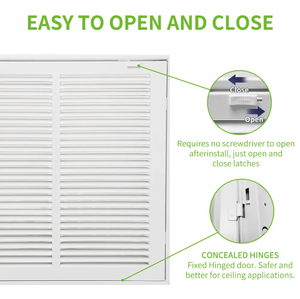
All categories
Featured selections
Trade Assurance
Buyer Central
Help Center
Get the app
Become a supplier

(246196 products available)






































Modal fabric is created by twisting threads which produces a smooth, even, and comfortable surface. Modal has a luxurious feel and is used in high-end clothing. Cotton fabric is made from the cotton plant. It is soft, breathable, and hypoallergenic, and used for casual and comfortable clothing. Linen fabric, made from flax plant fibers, is known for its crisp texture, natural luster, and exceptional breathability and moisture-wicking. Linen is used for lightweight, breathable clothing, particularly in hot and humid conditions.
Silk fabric is made from the silkworm's cocoon. It has a smooth, shiny surface and a luxurious feel. Silk is known for its breathability, natural sheen, and drape, often used for elegant clothing and accessories. Hemp fabric is woven from hemp plant fibers. It is durable, breathable, and becomes softer with each wash. Hemp fabric is eco-friendly, promotes sustainability, and is used for casual and outdoor clothing. Bamboo fabric is derived from bamboo pulp. It is soft, eco-friendly, and has natural antibacterial properties. Bamboo fabric is breathable and moisture-wicking, often used in eco-conscious clothing.
Satin fabric is created by weaving techniques that give it a glossy surface. It has a smooth feel and a luxurious appearance. Satin is used for formal wear and sleepwear due to its elegant look and comfortable texture. Chiffon fabric is made from twisted yarns. It's lightweight, sheer, and flowy, giving it a soft, delicate appearance. Chiffon is used for dresses and blouses, adding a romantic and airy feel. Taffeta fabric is a crisp silk or synthetic fabric. It is known for its structured form and luxurious sheen. Taffeta holds shapes well, making it ideal for formal gowns and evening wear.
Mesh fabric design features many patterns, structures, and functions that serve various purposes. The basic structure of mesh textiles consists of interconnected threads or fibers, forming numerous holes or porosities. These openings largely determine the permeability, breathability, and flexibility of the fabric. The design of mesh fabrics greatly varies by intended use, such as sports mesh for activewear, medical mesh for implants or repairs, and architectural mesh for building ventilation, all having different hole sizes, shapes, and densities.
Engineered meshes are also available, where the permeability and other physical properties of the fabric are tailored to meet specific performance needs. Often, additional features are incorporated into the mesh design, such as antimicrobial treatments, moisture-wicking properties, or UV protection. These features enhance the fabric's performance and durability and expand its uses into different domains.
When purchasing breathable mesh fabric for clothes, there are several important factors wholesale buyers should consider before placing bulk orders. First, they should consider the type of breathable fabric they need and its intended use. Some breathable fabrics are more suitable for athletic wear, while others are ideal for healthcare or home textiles. Next, they should consider the breathability and permeability of the fabric. They should also check the moisture-wicking ability of the fabric. Fabrics with this feature are perfect for keeping the wearer dry, especially if the garments are likely to be worn in hot and humid conditions.
Business buyers should order breathable mesh fabric samples to feel the materials in person and verify if they correspond to the needs of their target market. They should also consider the weight of the mesh material. In general, lighter breathable materials are more appropriate for athletic wear, whereas heavier ones can be used in upholstery or industrial applications. Buyers should also consider the durability and UV protection of the breathable mesh. This is especially the case for those targeting clients in regions with extreme temperatures. Finally, they should check the availability of the mesh material in different recycled options. This will not only make them eco-friendly but also help them serve a market that prioritizes sustainability.
The breathable mesh fabric specification varies based on the material. Some common breathable mesh fabric materials are polyester, nylon, spandex, cotton, and more. Nylon has excellent strength and elasticity, while spandex or elastane adds significant stretch for improved fit and flexibility. Polyester is preferred for breathable textiles due to its affordability, moisture-wicking capability, and quick-drying properties.
The breathability of the mesh is affected by its density or porosity, which is often measured by the number of holes per square inch (HPI) or the airflow in cubic feet per minute (CFM). Such features allow air and moisture to pass through the fabric, enhancing comfort. Other factors include durability, stretchability, and compatibility with other materials. These depend on the specific application of the mesh. These breathable mesh clothes should be properly cared for and maintained to extend their lifespan and performance. The cleaning method will, however, depend on the type of breathable mesh fabric used.
To clean breathable nylon mesh items, users should wash them in lukewarm water using a mild detergent. They should avoid bleach and fabric softeners, which can damage the fabric. Nylon mesh items should always be air-dried or dried at a low heat setting in the dryer. High heat can damage the fabric. Breathing polyester mesh items should be done using lukewarm water and mild detergent. Like nylon mesh, they should be air-dried or dried on a low heat setting. When washing cotton mesh items, users should use cold water with a mild detergent. Cotton clothing can be tumble dried on a low heat setting to maintain breathable features. For spandex or elastane mesh items, cold water and mild detergent should be used. These items should be air-dried to avoid damage from high heat.
A1. Yes, some breathable mesh fabrics are made from recycled materials, such as recycled polyester from plastic bottles. This helps reduce waste and the environmental impact of textile production.
A2. While breathable mesh clothing is designed for ventilation in hot and humid weather, some styles can be layered with other clothing to retain heat in colder conditions. It is advisable to wear heavier fabrics that are not breathable on top of the porous ones.
A3. Yes, breathable mesh is ideal for outdoor gear such as tents, backpacks, and hiking clothing, since it helps regulate temperature and moisture during outdoor activities.
A4. Yes, it can be easily customized in a variety of colors, prints, patterns, and textures to meet different aesthetic preferences of the end-user.
A5. Yes. Additionally, bamboo and cotton mesh breathable fabrics are hypoallergenic and biodegradable. They work well for people with sensitive skin.